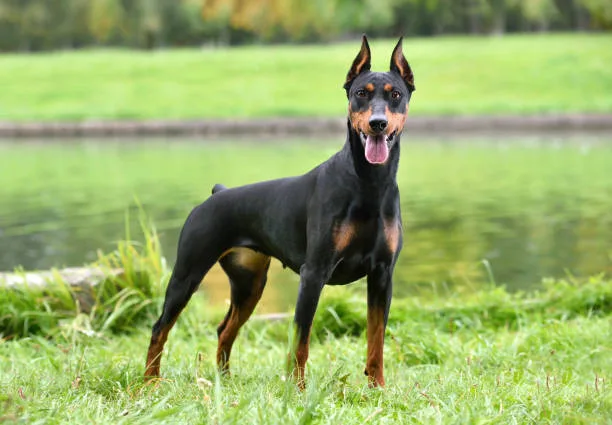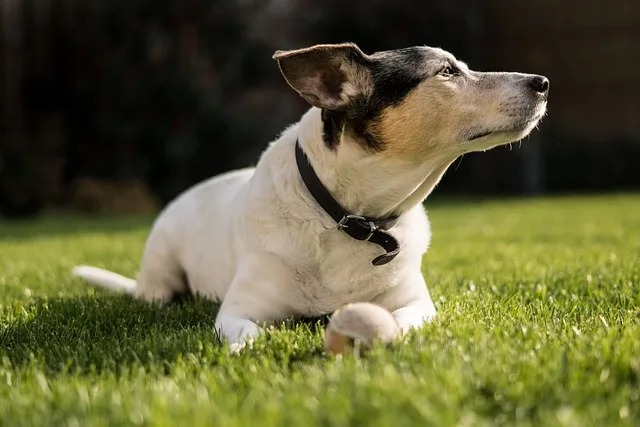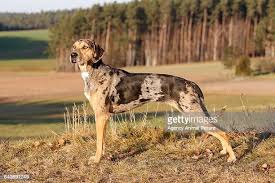Dog – The most honest and best pet animal-1
Dog
The Domestic Dog: Man’s Best Friend
The domestic dog, scientifically known as Canis lupus familiaris, is a remarkable and diverse species that has been an integral part of human civilization for thousands of years. This close relationship has resulted in a wide variety of breeds, each with its own unique characteristics and traits, making one of the most beloved and versatile animals on the planet.
Origins and Evolution
The story of the domestic dogs begins with its ancestors, the wolves. It lineage can be traced back to extinct Pleistocene wolves, which roamed the Earth thousands of years ago. Through a process of natural selection and early human interaction, these wolves gradually evolved into the loyal and diverse animals we know today.
Modern genetic research has revealed that it is closest living relative is the gray wolf (Canis lupus). Despite the vast differences in appearance and behavior, dogs and wolves share a common ancestry, which is reflected in their genetic makeup.
Domestication
The domestication of dogs represents one of the most significant milestones in human history. It is believed that they were the first species to be domesticated, with this process dating back over 15,000 years ago. Early humans, particularly hunter-gatherer societies, formed mutually beneficial relationships with these proto-dogs.
The exact circumstances and motivations behind the domestication remain a subject of debate among scientists. Some theories suggest that humans and wolves formed alliances for hunting purposes, while others propose that wolves began scavenging near human settlements, gradually becoming more docile and accustomed to human presence.
Follow Our Digiknowledge.co.in Page for Latest update about Bikes, Cars, Sports, Government Policy and many more.
Over time, selective breeding and human intervention led to the development of various breeds, each tailored to perform specific tasks. From herding livestock to guarding property and hunting game, they became invaluable working partners for humans.
Diversity of Breeds
One of the most remarkable aspects of the domestic dog is its incredible diversity of breeds. There are hundreds of recognized breeds, each with its own distinctive appearance, temperament, and abilities. This diversity is the result of centuries of selective breeding, where humans have chosen and bred for specific traits.
For example, the Border Collie, known for its intelligence and herding skills, has been selectively bred for generations by shepherds in Scotland. On the other hand, breeds like the Dachshund were bred for their ability to hunt small game in narrow burrows. These specialized breeds showcase the incredible adaptability of to various roles in human society.
In addition to working breeds, there are numerous companion breeds specifically bred for their affectionate and friendly nature. Breeds like the Labrador Retriever and the Golden Retriever are known for their loyalty, making them ideal family pets.
Here is a selection of some popular dog breeds, grouped by their primary characteristics and functions:
1. Sporting Breeds:
- Labrador Retriever: Known for their friendly nature and intelligence, Labradors are often used as guide and in search and rescue operations.
- Golden Retriever: These friendly and gentle dogs are often used in therapy work and excel in obedience training.
- Cocker Spaniel: Friendly and affectionate, Cocker Spaniels are known for their beautiful coats and make great family pets.
- German Shorthaired Pointer: A versatile hunting breed known for their stamina, athleticism, and loyalty.

2. Working Breeds:
- German Shepherd: Highly intelligent and versatile, German Shepherds excel in various roles, including police work, search and rescue, and as service dogs.
- Rottweiler: Powerful and protective, Rottweilers are often used as guard dogs and are loyal family protectors.
- Boxer: Energetic and playful, Boxers make great family dogs and excel in agility training.
- Doberman Pinscher: Known for their loyalty and intelligence, Dobermans are used in police and military roles.

3. Herding Breeds:
- Border Collie: The most intelligent of all breeds, Border Collies are excellent herders and excel in dog sports like agility.
- Australian Shepherd: Energetic and herding-oriented, Australian Shepherds make great working dogs on farms and ranches.
- Corgi: The Pembroke Welsh Corgi and Cardigan Welsh Corgi are known for their short legs and herding abilities.
4. Hound Breeds:
- Beagle: Friendly and curious, Beagles are often used in scent detection and make great family pets.
- Bloodhound: Renowned for their incredible sense of smell, Bloodhounds are used in search and rescue operations.
- Greyhound: These elegant dogs are known for their speed and are often used in racing.
5. Terrier Breeds:
- Jack Russell Terrier: Small and energetic, Jack Russells are known for their hunting instincts and need for exercise.
- Bull Terrier: Playful and muscular, Bull Terriers make loyal companions and excel in dog sports.
- Scottish Terrier: Often called the “Scottie,” they are known for their distinctive appearance and feisty nature.

6. Toy Breeds:
- Chihuahua: The smallest breed, Chihuahuas are known for their big personalities and are easy to carry around.
- Pomeranian: These fluffy dogs are playful and make great lap dogs.
- Shih Tzu: With their long, flowing coats, Shih Tzus are known for their regal appearance and friendly demeanor.
7. Non-Sporting Breeds:
- Bulldog: Known for their distinctive wrinkled face, Bulldogs are known for their calm and gentle nature.
- Dalmatian: Famous for their unique black spots, Dalmatians are active and need regular exercise.
- Poodle: Intelligent and versatile, Poodles come in standard, miniature, and toy sizes and excel in various roles.
8. Miscellaneous and Rare Breeds:
- Rhodesian Ridgeback: Known for the distinctive ridge of hair on their backs, they are used for hunting and make loyal family pets.
- Basenji: Often called the “barkless dog,” Basenjis are known for their quiet nature and unique yodel-like vocalization.
- Catahoula Leopard Dog: Originally bred for hunting and herding, Catahoulas are known for their striking coat patterns.

This list only scratches the surface of the incredible diversity of breeds. Each breed has its own set of characteristics and is suited to different lifestyles and preferences. When choosing , it’s essential to consider factors such as size, energy level, temperament, and grooming requirements to find the perfect match for your family and lifestyle. Additionally, adopting from shelters and rescue organizations is a wonderful way to provide a loving home to it in need, regardless of their breed.
Roles in Human Society
Throughout history, they have played a multitude of roles in human society. These roles include:
- Hunting Partners: They have been used for hunting purposes for thousands of years. Breeds like the pointers and retrievers excel at locating and retrieving game, while hounds are renowned for their tracking abilities.
- Guardians and Protectors: Many breeds, such as the German Shepherd and Rottweiler, have been bred for their protective instincts, making them excellent guard dogs and companions for personal security.
- Working : They have been employed in various working roles, including herding livestock, pulling sleds, and assisting people with disabilities. The Husky, for instance, is famous for its role in sled dog racing.
- Companionship: Perhaps the most common role today is that of a companion animal. Their loyalty, affection, and ability to form strong bonds with humans have made them cherished members of countless households.
- Search and Rescue: Highly trained search and rescue dogs play critical roles in locating missing persons during disasters and emergencies. Their keen sense of smell and agility are invaluable assets in these situations.
- Therapy and Service Dogs: They are often used as therapy animals to provide emotional support and comfort to individuals facing physical or emotional challenges. Service dogs are specially trained to assist people with disabilities, such as guide for the visually impaired or hearing dogs for the deaf.
- Military and Police service: Some breeds, like the Belgian Malinois and the German Shepherd, have been employed by law enforcement and the military for tasks such as bomb detection, search operations, and apprehending suspects.
Adaptability and Intelligence
They are known for their remarkable adaptability and intelligence. They can thrive in a wide range of environments, from bustling cities to remote rural areas. Their ability to learn and follow commands makes them highly trainable, and they often excel in obedience training, agility courses, and even competitive sports.
Their intelligence is not limited to obedience, though. Many breeds are renowned for problem-solving abilities and can be trained for complex tasks. Border Collies, for instance, are often considered the most intelligent of all dog breeds due to their quick thinking and problem-solving skills.
Communication and Social Behavior
They communicate with humans and each other through a combination of vocalizations, body language, and facial expressions. They have an extraordinary ability to understand human emotions and moods, which contributes to their role as empathetic and supportive companions.
A wagging tail, a playful bark, or a soulful gaze can convey a dog’s feelings and intentions. Understanding these signals is crucial for building a strong bond between humans and their canine companions.
Health and Care
Proper care and attention are essential for ensuring the health and well-being of dogs. Regular veterinary check-ups, vaccinations, and a balanced diet are fundamental aspects of responsible dog ownership. Additionally, exercise and mental stimulation are crucial for keeping dogs physically and mentally fit.
Different breeds have varying health considerations, and prospective dog owners should research the specific needs and potential health issues associated with their chosen breed. Grooming requirements also vary widely, from the minimal grooming needs of short-haired breeds to the more intensive care required by long-haired breeds.
Human-Dog Bond
The bond between humans and dogs is a testament to the enduring relationship between our species. Dogs have an innate ability to form strong emotional connections with their human companions. This bond is often described as the “human-dog bond” and is characterized by trust, loyalty, and mutual affection.
Research has shown that the presence of dogs can have numerous positive effects on human health and well-being. Interacting with dogs has been associated with reduced stress levels, lower blood pressure, and increased feelings of happiness and comfort. This therapeutic effect has led to the use in various forms of animal-assisted therapy.




